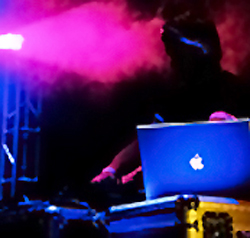If you’re reading this article you might already know that EDM stands for Electronic Dance Music.
The styles range over a wide gamut of music, from House to Dubstep, Drum-n-Bass, and IDM (Intelligent Dance Music).
While the specifics of each style are extremely diverse (even within different styles there are dozens of sub-styles) – certain attributes remain consistent.
If you are just getting into EDM, or just want a fresh perspective on it, this article should offer some great food-for-thought.
Rhythm
The purpose of EDM is to make people dance. Period. The rhythmic elements and the movement of the record are sacrosanct.
Once you find the pulse of the record, you make that as clear as possible. That means pushing the rhythm elements way up, exaggerating any kind of pumping movement and articulating the attacks of anything that is outlining that rhythm.
In addition, it’s best when people not only hear what they want to dance to, but feel it as well. One of the biggest challenges with EDM is packing that heavy bass into the mix. The first key is to remember that physical bass is a much wider range than just the sub.
In fact, club systems tend to be very unreliable when it comes to the sub range. Pay special attention to what’s happening between 80 Hz and below 300 Hz. There’s a still a lot of physical bass there, and a little love in that zone can go a long way.
In fact, most instruments have “physical” ranges. For a snare, you might be looking at 300 Hz – 500 Hz. For a hi-hat you might be looking at 1 kHz. To say exactly where the physicality of a certain sound exists is almost pointless – it varies widely. But when you feel it, you know.
Loudness
The difficulty in physical sound, and I know a lot of engineers are going to shoot me for saying this, but the difficulty is that club music needs to be loud.
Only so much energy can fit into a limited space, so picking and choosing how to maximize your bang-for-the-buck in terms of headroom is one of the biggest challenges in EDM.
Sometimes it’s a lot more productive to trigger a sine wave or use a bass enhancer on a kick drum, rather than simply boosting the low end – as you can get a little more “perceived” bass without running the headroom. And equally over extending compression or distortion to gain perceived size is also worth experimenting with.
Ideally all club systems would have tons of clean amps with DJs who know how to not overload the speakers, who could then turn the club amps up and keep there mixers down. But that’s not the world we live in.
So until then, club music does fall under the jurisdiction of the loudness police.



















